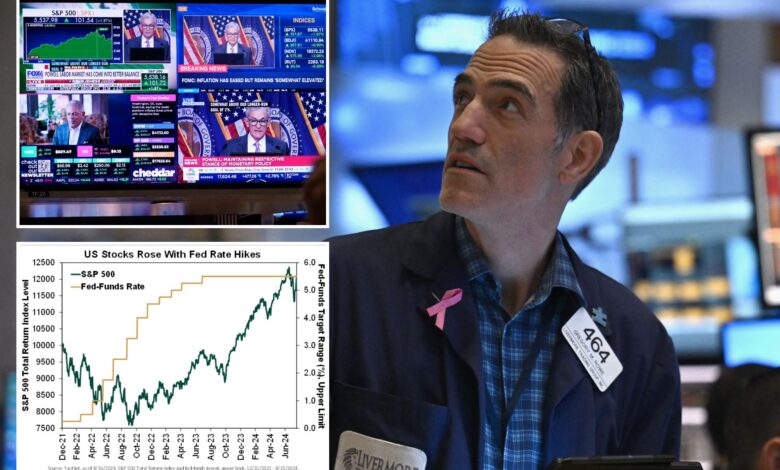The Fed is finally about to start cutting rates — and here’s why you shouldn’t care

So it looks like the Fed will finally cut rates in September. But by how much? And is it too late? Too early?
After witnessing decades of endless soothsaying and hand-wringing over the central bank and its next moves, I have reached a straightforward and decisive conclusion: Who cares?
Sound heretical? Crazy, even? If so, hear me out. The proof abounds: Stocks don’t need rate cuts. Cut, hike or hold, the Federal Reserve’s actions rarely mean much for investors — and their talk even less.
Yes – many presume that all the PhDs and institutionalized processes at central banks make them powerfully important — with prescriptive pronouncements and actions that ripple seismically and inevitably through the markets.
Wrong! It’s all voodoo.
Take wages. Fed folks deem wage growth inflationary. Never! Five decades ago, Nobel Prize winner Milton Friedman proved that rising wages always follow inflation — they never cause it.
So it was this time around, as inflation started spiking in February 2021, finally hitting a 9.1% peak in June 2022. Meanwhile, wages were actually down during the first half of 2021 before they started perking up, hitting their growth peak of 6.7 in June 2022. Since then, while inflation has dropped precipitously, wages have actually eased more slowly. Most recently, inflation and wage growth were at 2.9% and 3.9%, respectively.
To review: Inflation first; wage hikes later. Always. Global too, where inflation’s slowing came while UK and eurozone wages surged.
Indeed, central banks react to things far more often than they cause them. (Uniform, wrongheaded economic training spurs braindead groupthink – nodding to each other knowingly while never knowing what’s next.)
Take “forward guidance,” when central bankers signal future policy changes to prevent surprises. This guidance is supposed to yield transparency. Instead, it sows chaos when they later veer from it – which they do regularly.
Example: In May 2022, Chairman Jay Powell said the Fed “wasn’t even considering” 75-basis-point hikes. It hiked that much the very next month … and three of four months thereafter. Oops!
That isn’t unique. The European Central Bank openly predicted no 2022 hikes but raised rates 50 bps that July — and three more times after that. Another six times in 2023. The Bank of England flip-flopped twice this cycle, too. They all flip-flop as often as not, and always have.
It isn’t all just because of idiocy. The global economy is complex. Data vary. Interpretations change. Stuff happens. But if central bankers don’t know their next move, how can you? You can’t. Yet pundits foolishly keep scrutinizing policymakers for clues, parsing their words and body language, or even reading into their silence.
Don’t bother. Even if you could, it wouldn’t help. Consider: Commercial banks borrow short-term funds to finance longer-term loans. Hikes aim to raise banks’ funding costs, cooling lending, GDP growth and inflation.
During this cycle, as I explained in a December 2022 column, global deposit gluts have kept banks’ funding costs super low — negating hikes’ power and the logic behind them (and behind cuts now.) So, loan growth endures at moderate expansionary levels.
Does our economy need cuts? Seemingly not. US GDP has grown eight straight quarters. Europe’s recovery began long before their initial cuts.
Stocks don’t need cuts, either. Yes, hiking fear partly drove 2022’s slide. But the S&P 500 gained 59.5% since that October’s low — preceding six straight rate hikes. And stocks boomed in 2024 while earlier expectations of rapid rate cuts imploded.
The European Central Bank hiked starting July 2022. By its first cut this June Eurozone stocks were 38% above pre-hike levels. The Bank of England hiked 14 times from December 2021 until this August’s cut. UK stocks rose 24% in pounds over that stretch.
With hikes like those, who needs cuts? Despite all the “high rates” talk, today’s fed-funds rate and 10-year Treasury yield are historically quite normal long-term. Myopia blinds many to that.
So don’t sweat central banks — hawkish or dovish. It’s all birdbrained. Enjoy this bull market.
Ken Fisher is the founder and executive chairman of Fisher Investments, a four-time New York Times bestselling author, and regular columnist in 21 countries globally.




